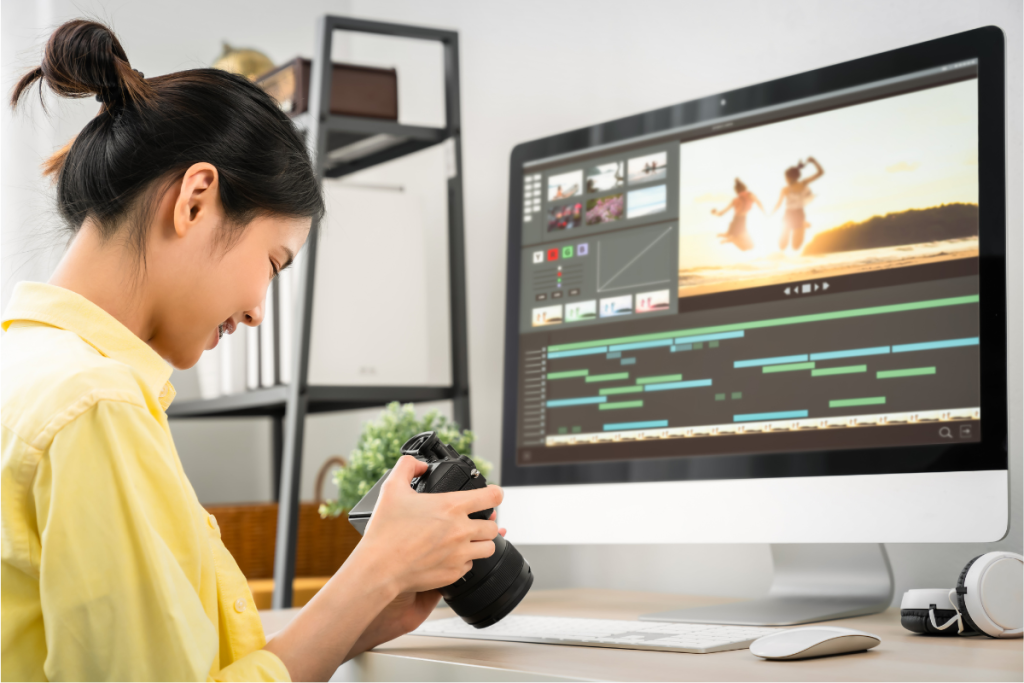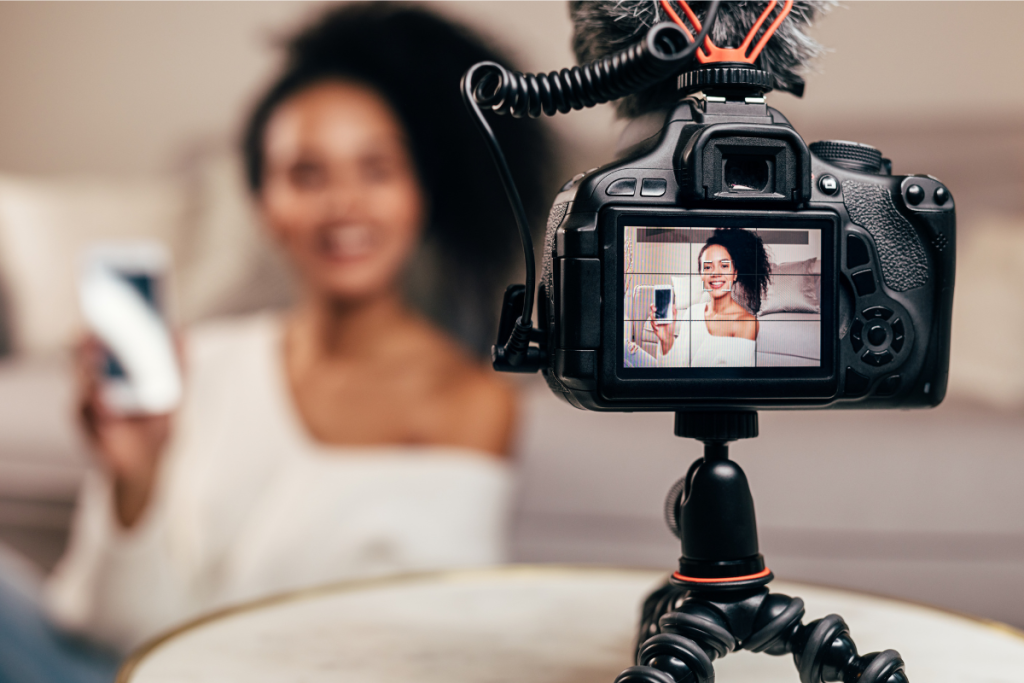What is video production?
Video production marries artistry with technical skill, centered on crafting content using moving imagery. It unfolds across critical phases: pre-production, which involves detailed planning and design of the project; production, where the actual filming occurs; and post-production, the stage of editing and refining the footage. This structured process effectively converts initial ideas into engaging visual stories, adaptable for a range of formats including short films, corporate videos, YouTube segments, or live streams.
However, video production is much more than simply operating a camera. It’s an intricate craft that weaves together narrative storytelling, technical proficiency, and creative flair. Each phase, from developing the script and laying out the storyboard in pre-production to filming the scenes and editing the final piece in video editing software, is critical to bringing the envisioned story to life. Every step in this journey plays a vital role in shaping the end result – a finished product that captures and communicates the intended message or story.
Why is video production important?
As the landscape of online presence continues to evolve, video production emerges as a key player in how we communicate and connect. Today’s audience gravitates more towards videography content, preferring it for its engaging and dynamic nature. This shift underscores the importance of video as a medium for reaching out and resonating with viewers.
Videos offer a unique advantage, particularly when physical proximity isn’t possible. They serve as a bridge, drawing you closer to your audience, no matter the geographical distances. Through the power of video, emotions and experiences are shared, creating a bond that transcends the digital barrier. For businesses, this means an opportunity to forge stronger connections with customers, showcase their offerings more vividly, and elevate their brand’s visibility. For individual creators, videos are a canvas for self-expression and a means to share their voice with a global audience. Essentially, video production is more than just creating content; it’s about fostering connection and community in a world that’s increasingly shifting to digital interactions.
In which areas can you use video production?
- Marketing and advertising campaigns: Businesses often harness the power of video production for developing engaging advertisements and marketing materials. These videos are crafted to showcase the company’s offerings, brand values, and unique selling propositions, thereby enhancing their market presence.
- Personal and lifestyle vlogging on platforms like YouTube: Video production plays a pivotal role for content creators and vloggers who share their life experiences, expertise, and entertainment-focused content with a broad online audience through platforms like YouTube.
- Online broadcasting and interactive sessions: The realm of video production extends to live broadcasting, commonly seen in online gaming streams, educational seminars, and interactive webinars. This format offers real-time engagement, bringing together content creators and their audiences in a dynamic, interactive environment.
How to start video production as a beginner?

Conceptualization and planning :
- Define the purpose and audience:
- Identify what you want to achieve with your video. Is it to inform, entertain, persuade, or sell?
- Understand your audience. What are their interests, age group, and what message will resonate with them?
- Writing a script or outline:
- Start with a basic outline of your video, highlighting key points or messages.
- For a script, write dialogue and descriptions of what will be seen and heard in the video.
- Keep the language simple and conversational, especially if the video will include speaking parts.
- Planning shots and storyboard:
- Break down your script or outline into individual shots.
- Create a storyboard, which is a sequence of drawings or images to represent each shot.
- Include notes on each shot, like the type of shot (wide, medium, close-up), camera movement, and any dialogue or action.
- Tips:
- Keep the concept simple, especially for your first projects.
- Focus on a clear message. Avoid cluttering the video with too many ideas.
Understanding your equipment:
- Familiarize with your camera:
- Learn the basic functions of your camera. This includes turning it on, recording, and playing back footage.
- Understand the different modes your camera offers, like manual, automatic, or semi-automatic settings.
- Basics of camera settings:
- Exposure: Learn about ISO, aperture, and shutter speed. Practice adjusting these settings to get the right exposure.
- Focus: Understand how to focus manually and automatically. Practice focusing on both stationary and moving subjects.
- Framing: Learn about basic composition rules like the rule of thirds, leading lines, and headroom.
- Practice shooting:
- Experiment with different angles and compositions. Try high angles, low angles, and shots with varying depths.
- Practice movement shots like pans (horizontal movement) and tilts (vertical movement).
- Tips:
- Test your equipment in different environments (indoor, outdoor, low light).
- Learn the basics of lighting. Even simple lighting setups can significantly improve your video quality.
- Basic video production equipment list:
- Camera: Choose one that fits your needs, whether it’s a DSLR, mirrorless camera, or a high-quality phone camera
- Microphone: To capture clear audio, consider lavalier, shotgun, or studio microphones depending on your shooting environment
- Lighting Equipment: Basic lighting kits, including LED panels or softboxes, to enhance the quality of your visuals
- Editing Software: Like Adobe Premiere Pro, Final Cut Pro, or DaVinci Resolve for post-production work
- Tripod: For stable and steady shots
With the right set of tools and a good understanding of how to use them, you can significantly enhance the quality of your video productions.
Shooting your video:
- Setting up your location:
- Choose a location that fits the theme of your video. Be mindful of the lighting, background, and ambient noise.
- Consider the time of day for outdoor shoots, as natural lighting changes.
- Following your storyboard and script:
- Stick to your storyboard as closely as possible, but be open to improvisation if it enhances your story.
- Keep track of your script, ensuring all dialogues and scenes are covered.
- Capturing B-roll footage:
- B-roll is additional footage that can be cut into your main shots. It adds depth to your story and covers any jump cuts.
- Capture various shots related to your main subject, like surroundings, reactions, or actions.
- Tips:
- Use a tripod or stabilizer to keep your shots steady.
- Shoot more than you think you’ll need. It’s better to have more footage than not enough.
Editing your footage:
- Importing footage:
- Transfer all your footage to a computer and import it into your chosen editing software.
- Organize your clips by labeling them according to the scene or shot type.
- Arranging clips on a timeline:
- Start assembling your clips on the timeline. Focus on creating a cohesive story that flows smoothly.
- Cut out unnecessary parts, keeping only what adds value to your narrative.
- Adding transitions, music, and effects:
- Use transitions sparingly. They should aid the story, not distract from it.
- Add background music if it enhances the video, but ensure it doesn’t overpower your dialogue.
- Apply effects or color correction to enhance the visual appeal of your video.
In summing up this beginner’s guide to video production, it’s evident that the craft is an intricate blend of storytelling, technical know-how, and creativity.
For budding videographers, the journey is all about continuous practice and learning. Every video you make is a chance to improve and share a story that’s uniquely yours. Always be open to trying new things and feeding your curiosity. Your commitment and enthusiasm are key to excelling in video production and leaving a mark with your visual narratives.
Remember, learning in this field is ongoing. Feel free to come back to this guide or look for more resources to sharpen your skills. The next video you make might just captivate your audience, tell a memorable story, or even change perspectives. So, keep on filming, keep being creative, and keep on sharing what you see with the world.

FAQ
Can I start video production with a smartphone?
Absolutely! Modern smartphones are equipped with high-quality cameras, making them a great starting point for beginners in video production. They’re convenient and can teach you the basics of framing, composition, and storytelling. Check out RECnGO app that helps you set-up a studio in less than 5 mins on your own by connecting your existing mobile and camera devices with one app and no mess of cables.
How important is editing in the video production process?
Editing is crucial as it’s where your footage is transformed into a cohesive story. It involves selecting the best shots, arranging them effectively, adding music, transitions, and effects. Good editing can significantly enhance the quality and impact of your video.
What’s the best way to learn video production as a beginner?
The best way to learn is by doing. Start with small projects, experiment with different styles and techniques, and progressively challenge yourself with more complex tasks. Also, watch and analyze videos from creators you admire to understand different styles and techniques.
How can I improve the audio quality of my videos?
Good audio is essential for a quality video. in an external DSLR microphone that suits your camera and environment. Also, pay attention to your recording conditions, avoiding noisy backgrounds and focusing on clear sound capture.